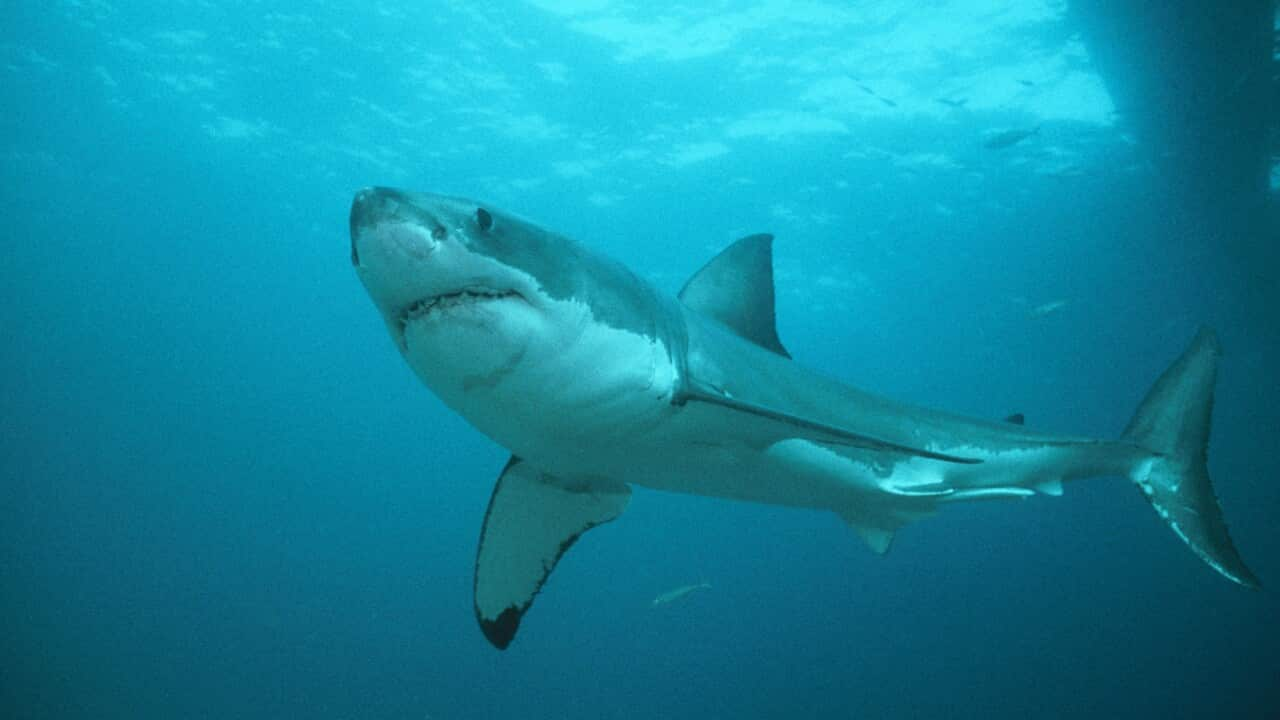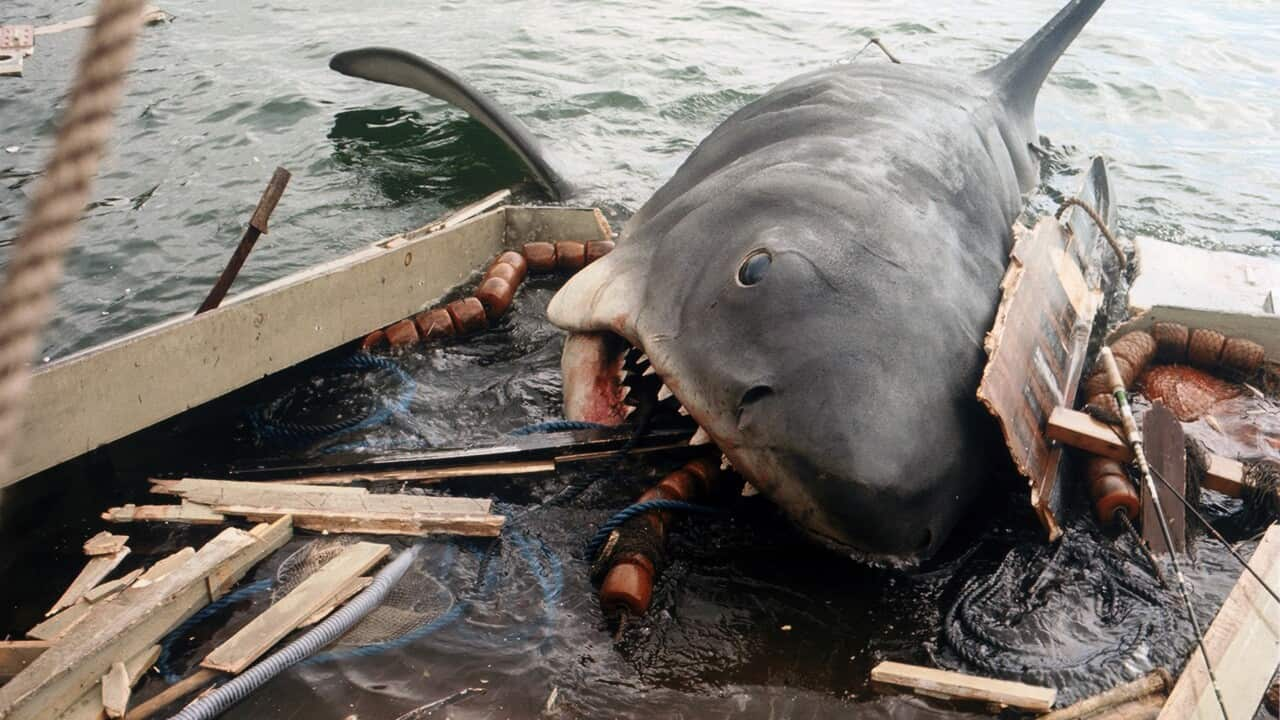Key Points
- Several Australian beaches have been closed in recent weeks due to shark sightings and encounters.
- Experts say the likelihood of encountering or being attacked by a shark remains low.
- Swimmers are advised to stay in patrolled areas, and follow safety warnings and swim in groups.
This summer, several beaches across Australia have been evacuated due to shark sightings and encounters.
In Sydney, lifeguards closed Shelley and Manly beaches after a dolphin was mauled by multiple bullsharks on 21 January. On 3 January, Palm Beach was closed after up to 15 hammerheads were spotted.
On 3 February, a shark was spotted in nets at Manly Cove.
In Perth, a tiger shark was spotted just metres from swimmers at Mullaloo Beach on 9 January, and on 31 January, Swanbourne and City beaches were closed after a hammerhead sighting.
On 26 January, two men were fishing off the coast of Victoria when a great white shark mauled the motor of their boat.
Many swimmers are now on high alert, but experts say while shark sightings should be taken seriously, the likelihood of an encounter remains low.
Here's what you need to know about shark encounters, how to stay safe, and what you should do if you see one.
Chance of shark encounter 'very unlikely'
Shane Daw, general manager for coastal safety at Surf Life Saving Australia, told SBS News the chances of a shark encounter remain low.
"The likelihood of someone encountering shark and knowing about it is pretty remote, it's very unlikely," he said.
"If we were to look broadly at the 12,000 beaches that we have around Australia we know that sharks are in all our waters, but for the most part they go largely unseen, and won't pose any threat or danger to people."
According to Surf Life Saving Australia's 2022 National Safety Report, there were 208 coastal fatalities across the country last year, 141 of which were drowning deaths.
Eight per cent were due to marine fauna, which includes creatures such as stingers and crocodiles as well as to sharks.
'We are not their food of choice'
Experts say the number of beach evacuations and sightings does not necessarily indicate an increase in the number of sharks in our waters.
Associate Professor Daryl McPhee is a shark expert at Queensland's Bond University. He says monitoring and technology have enabled us to sport sharks more easily, which can contribute to a higher number of reports and evacuations.
"What we are doing is getting much better at spotting sharks, especially through drones, so that’s contributing to this series of beach evacuations that we’re seeing," he said.
"Sharks can be more active this time of year, there can be a fair bit of fish in the water as well, so sharks will be present on beaches throughout the year depending on species and location."
Professor McPhee said this season does not appear to be any more dangerous than previous years.
"I don’t think it is (different than previous years), it’s certainly within the bounds of what I would be expecting to see."
Mr Daw says it is also important to understand sharks are not likely to target humans, and many encounters or attacks happen by accident.
"All the research shows ... we are not their food of choice," he said.
"A couple (of encounters) have happened when people have been out spearfishing and are trailing fish, and the sharks come over to bite the fish ... or in other cases, when surfers are sitting on their board it might look like a seal or large fish, and the shark comes up for a feed."
When are you most likely to see a shark?
While sharks are in our waters year-round, there are certain times of year that you may be more likely to spot them.
Mr Daw said an increase in shark activity and prevalence often occurs due to fish migration, with sharks following fish for feeding opportunities.
"For most parts of Australia, between September through to around December, we see an increase in fish migrating through our coastal waters, and therefore the likelihood of a shark encounter is increased because we obviously have sharks who are following fish for a feed."
He said higher numbers of swimmers in warm climates and tourism destinations can also contribute to higher numbers of sightings.
"In Queensland, there is a lot warmer weather, and a greater population and greater tourism population, so the chances of a shark sighting are going to be much greater," he said.
"It doesn't mean there's more sharks, but if you have more people out on a more regular occasion, the likelihood of spotting or encountering a shark are going to increase."
What should you do to avoid sharks?
In order to avoid an accidental shark encounter, experts recommend swimming in patrolled areas, swimming in groups, and remain on high alert if there are schools of fish nearby.
"The number one thing is to swim at a patrolled beach between red and yellow flags because lifesavers and lifeguards are going to have information if there's been any recent shark sightings," Mr Daw said.

Sharks have been spotted at several Australian beaches over the summer. Source: Getty
Mr Daw said it was also best not to swim alone, as sharks appear to be deterred by larger groups of people.
"By swimming with other people, there is also a greater chance you might not encounter a shark, but should an encounter occur, but also if you're with other people are around they're going to be able to assist you."
What should you do if you see a shark?
If you spot a shark in the water, the NSW Government's SharkSmart initiative recommends telling an on-duty lifesaver or lifeguard as soon as possible.
If a shark alarm is sounded while you are swimming, you should leave the water immediately.
Mr Daw says if you spot a shark in the water, it is important to act quickly and remain calm.
"Try to stay calm, you don't want to be splashing because a shark can deem that to be a fish," he said.
"Stay calm, use slow movements, head back to shore and alert other people in the area."











